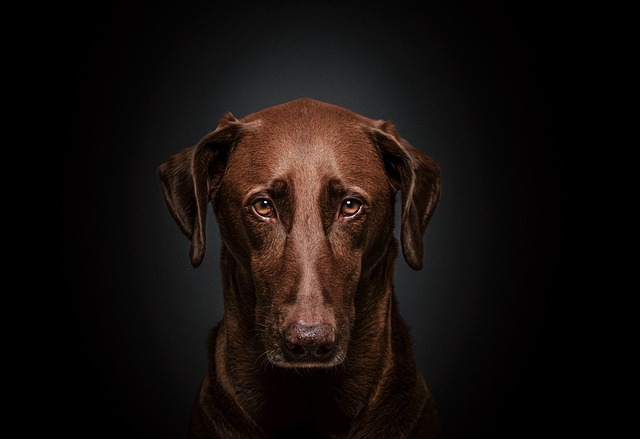
why is my dog’s skin peeling
If you’re a new dog parent in the US—maybe you’re folding laundry in your New York City apartment and notice white, flaky bits of your 8-month-old Golden Retriever
If you’re a new dog parent in the US—maybe you’re sitting on your California apartment floor, petting your 7-month-old rescue Corgi, Max, and noticing a patch of his tan fur is gone, leaving a red, scaly circle on his back, or you’ve caught him licking his paws raw after a rainy walk in the park—you’ve probably panicked a little: Is this just dry skin? Or something worse? Fungal infections on dog skin are common, but they look different from regular dandruff or allergies. Knowing what to spot helps you get Max treatment fast—before it spreads. Let’s break this down with simple, easy-to-notice signs.
First, let’s keep the science straightforward: Most dog fungal skin infections are caused by tiny organisms like Malassezia (yeast) or Microsporum (ringworm). These fungi love warm, damp spots—think between your dog’s toes, under their armpits, or on their belly after a bath you didn’t dry fully. Unlike dry skin (which just has small, white flakes), fungal infections change the skin’s color and texture. Yeast infections often look like red, greasy patches with a musty smell, while ringworm (despite the name, it’s a fungus!) causes round, bald spots with a scaly edge—like someone drew a circle with a pencil. Take Lisa, a first-time owner in Texas: Her Shih Tzu, Lua, got a yeast infection in her skin folds after Lisa skipped drying her thoroughly post-bath. The vet spotted the red, sticky patches right away—and Lua healed with medicated shampoo in two weeks.
Here’s how to spot a fungal infection on your dog’s skin, step by step: Start with a gentle check—sit your dog on a towel, give them a freeze-dried chicken treat (positive reinforcement keeps them calm; never hold them down or scold them for wiggling—punishment goes against US animal welfare norms), and run your hands over their body. Look for 3 key signs: 1) Round, bald spots (especially on the face, paws, or back) with scaly edges (ringworm’s signature look); 2) Red, greasy skin (often in folds or between toes) that smells musty (yeast infection); 3) Constant itching or licking—if your dog is scratching until they bleed, that’s a red flag. If you see these, don’t try home remedies (like human antifungals—they’re toxic!); take photos of the spots and call your vet within 24 hours. For apartment living, temporarily keep your dog’s bed away from damp areas (like near the shower) and vacuum floors weekly—fungi can live on carpets.

Now, let’s tie in rules and habits that matter. Every US state requires core vaccines (distemper, parvovirus)—while vaccines don’t prevent fungal infections, regular vet visits (mandatory for shot updates) let your vet catch early signs. Skipping visits could mean the infection spreads, and in states like New York or Florida, neglecting your dog’s skin pain might lead to welfare checks. When you walk your dog (even if you suspect an infection), always clean up their poop—cities from Seattle to Boston fine up to $300 for leaving waste, and while poop doesn’t spread fungi, it’s part of being a responsible owner. If your dog has a fungal infection, avoid dog parks or playdates—ringworm spreads to other dogs (and even humans!) via contact. In apartments, use a pet-safe disinfectant on surfaces your dog touches (like doorknobs) to stop fungi from lingering—this also keeps neighbors safe from accidental spread.
Spotting a fungal infection early is key to fast healing. With gentle checks, positive reinforcement, and quick vet care, you’ll help your dog feel better in no time. Before you know it, Max will be back to chasing his toy ball—no more itchy patches, just a happy, healthy pup.

If you’re a new dog parent in the US—maybe you’re folding laundry in your New York City apartment and notice white, flaky bits of your 8-month-old Golden Retriever

If you’re a new dog parent in the US—maybe you’re sitting on your California apartment floor, petting your 7-month-old rescue Corgi, Max, and noticing a patch of his tan fur is gone

Most dog owners don’t realize tetanus can affect their pups—especially when they’re exploring yards or wooded areas, where small cuts or punctures (from nails, thorns, or even broken glass) are common.

If you’re a new dog parent in the US—maybe you’re standing in your New York City apartment bathroom, towel in hand, staring at your 6-month-old Golden Retriever

If you’re a new dog parent in the US—maybe you’re kneeling on your California apartment floor, noticing your 8-month-old rescue Pug

You’ve probably noticed your dog shaking their head more than usual or scratching intensely at their ears—maybe even leaving behind a dark